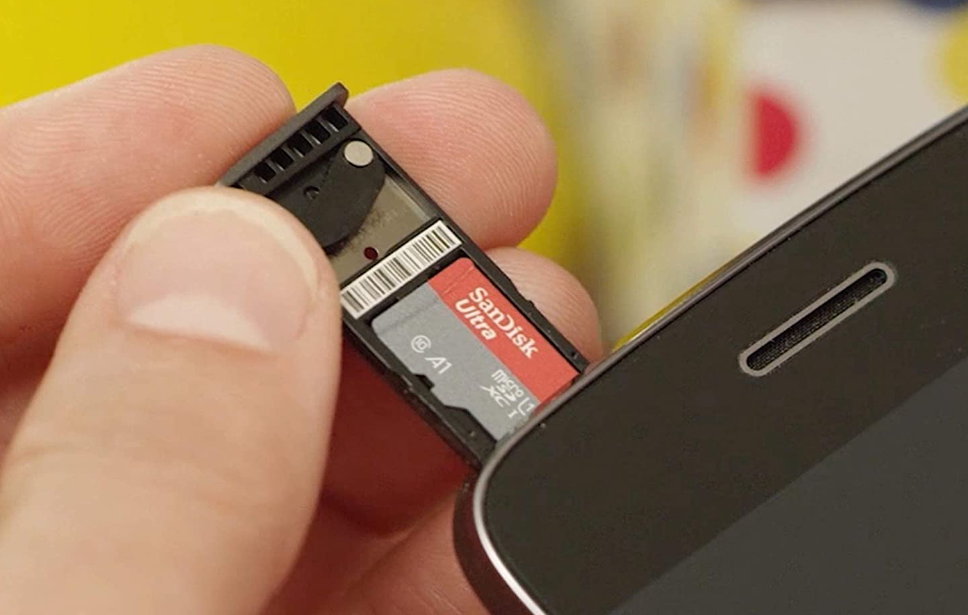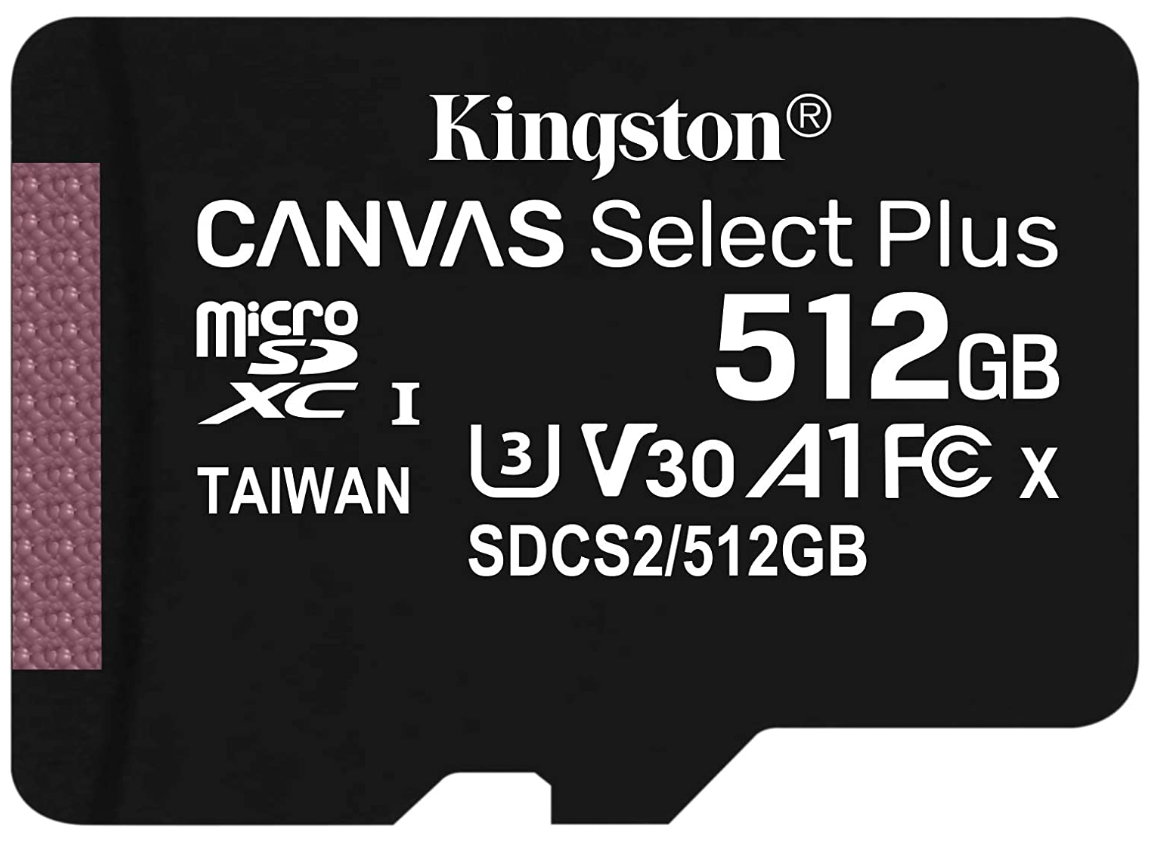External memory cards are still very useful and not only for increasing the capacity of the device’s internal storage, because they can run applications or entire operating systems. In this group, MicroSDs stand out for their compact dimensions and we dedicate this guide to them, where we will go into detail all functions that the user should knowending with the selection of the best available offers.
Modern memory card standards were born two decades ago out of a need to overcome the chaos of closed and incompatible formats that proliferated at the time. After initial development by the manufacturer SanDisk, they were standardized by the industry group SDA under the Secure Digital standard. It was a success because these components were extremely useful.
Although some mobile device manufacturers have reduced support, there are still a basic group of products increase the storage capacity of hundreds of millions of devices (supported mobile phones, tablets, cameras, drones, GPS or portable consoles), in addition, it is an essential means of operating operating systems on single-board computers such as Raspberry Pi or run Android apps to free up space on your smartphone.

MicroSD memory cards
They are the smallest size of any SD, with some extremely small dimensions with dimensions of 15×11×1 mm, an area of 165 mm2 and practically negligible weight. His size was certainly the key to increasing his acceptance. And their versatility is huge, since they can be used directly on devices that support them, through internal SD adapters, and also on other external ones, for example, when using special flash drives that have microSD readers and are connected to USB ports.
Although external microSD cards are identical, there is a big difference between them and not only in storage capacity. As with other standards (see USB or Wi-Fi), the people responsible have added a lot of features that should be familiar. We’ll go over them all because they can be real gibberish to the general public.

Format
It is the main distribution of these cards. There are three, although really the only one to judge is the third, which all new devices now support:
- micro SD: The oldest. They have a capacity of up to 2 Gbytes and can be used in any microSD slot.
- microSDHC: They have a capacity of 2 to 32 GB and can be used on devices with SDHC and SDXC support.
- microSDXC: They are the most modern and currently the only shopping reference. Its capacity ranges from 32 Gbytes to 2 Tbytes, which is the maximum supported so far, although the new SD Express format, which we will talk about later, will greatly expand it.
Class
The ecosystem of microSD memory cards is so huge that when choosing a card, we must also consider that the performance is sufficient for the use for which we intend to allocate it. This “class” defines minimum speed in megabytes per second which is able to support the card in write mode. The minimum supported write speed for each class is:
- Class 2: At least 2 MB/s.
- Class 4: At least 4 MB/s.
- Class 6: At least 6 MB/s.
- Class 10: At least 10 MB/s.

Maximum – Minimum power
These are the maximum and minimum speeds microSDs can achieve when transferring data, and expand from the originals to cover the needs of new applications such as 4K recording. To consider the following sections:
The maximum reading speed (sequential) that the card supports is defined by the Ultra High Speed (UHS) specification and has two versions:
- UHS-Iwith a bus speed of up to 104 Mbps
- UHS-II with a bus speed of up to 312 Mbps
The minimum write speed (sequential) supported is defined separately, with numbers 1 or 3 inserted in U, and with two versions:
- U1: At least 10 MB/s.
- U3: At least 30 MB/s.
He random performance It is also defined in the standard and is offered in two versions:
- A1: original
- A2: a new specification that quadruples the minimum in random read/write (4,000/2,000 IOPS) over the previous one.
Nominal speed. Don’t go… there’s more. Most manufacturers list the nominal speed of their card and it is the maximum they are able to achieve in read mode, expressed in MB/s.
relative speed. This corresponds to the original increase in the transfer rate of the CD format (150 KBps). So you might see something like “2x”, 4x” and so on. “100x” would correspond to 15MB/s.
These last two features are not standardized, only some manufacturers use them, and (thankfully) they are disappearing, but in case you come across them, you know what they mean. The rest of the specs are usually included, and you’ll see them printed on the cards themselves, on the packaging where they’re sold, and on the product’s website.

SD Express: a new level
It is a new specification of the Secure Digital standard that has taken this format to the next level of performance and capacity. For this, SD Express uses PCIe 3.0 interface and NVMe v1.3 protocol, the same as other storage products such as SSDs. Within PCIe, SD Express achieves data transfer performance that will approach that of the fastest removable cards, Compact Flash, which are price-restricted to the professional camera market.
In addition to performance improvements, storage capacity will also increase, potentially reaching 128 TB. A real outrage for SD Express cards, which will initially be offered in SDUC, SDXC and SDHC formats. SDA continues to work on this standard and version 8 has already been announced with support for two PCIe lanes with an additional row of contacts and PCIe 4.0 transfer rates for bandwidth that will increase from the original 985 MB/s to a maximum. 3938 MB/s.
The “Express” bus will also be available for microSD, which concerns us in this guide. Although it does not match the performance of the larger SD, the bus speed allows it to offer a read speed of 624 Mbytes per second. These SD Express can be used in advanced photography and video tasks (8K resolution management and RAW images), previously reserved for the aforementioned Compact Flash. In terms of data storage and software execution (the most used in consumption), its increase in level will be stratospheric. Hopefully they will hit the market soon.
How to choose a card
The ability It will certainly be the first matter to consider, not the only one. If your device supports the minimum, we’d put it at 32GB. From there, until you break the Tbyte barrier, you have a wide range to choose from.
as for performanceIt will depend a lot on the device where you will be using it. It has nothing to do with GPS, where we only need to expand the internal storage, and something more than when we use it to run applications from a smartphone or an operating system like Raspberry Pi, where we need more power. If we use them in RAW or 4K cameras, then you will have to buy the fastest ones on the market.
Also note the group of “resistant” cards. They are mainly intended for professionals or users who need memory cards long service life and maximum resistanceprotection against water, dust or transport center X-rays, plus data recovery software included.
you won’t make a mistake. All the big providers offer great reliability, above-the-minimum speeds and good support, even a lifetime warranty on the best models. Almost all usually include an adapter for use in SD slots and can be connected to USB ports with the appropriate adapter.

MicroSD memory cards (prices March 2023)
With all of the above, let’s go shopping. It must be said that like other products based on NAND flash memories the price per GB has dropped a lot last few years and if you don’t need too much capacity, there is an offer for just a few euros. In general, the most profitable versions in terms of price per GB are 64, 128 and 256 GB. If your device supports it, they would be the preferred choice. We leave you the choice from the current offer.
Kioxia Exceria. Former memory brand Toshiba launches these MicroSDXC UHS-I, U1 cards with speeds up to 100MB/s with the following capacities and prices:
- 64 GB for 7 euros.
- 128 GB for 16 euros.
- 256 GB for 36 euros.
SanDisk Ultra. microSDHC cards with a read speed of up to 120 MB/s. Class 10, U1 and A1 include an adapter for SD and are distributed in the following versions and prices:
- 256 GB for 32 euros.
- 512 GB for 63 euros.
- 1TB for 143 euros.
Samsung EVO Select. MicroSDXC UHS-I, Class 10, U1 cards up to 130 MB/s. They are durable and sold with an SD adapter in the following versions and prices:
- 64 GB for 10 euros.
- 128 GB for 18 euros.
- 256 GB for 29 euros
- 512 GB for 55 euros.
Kingston Canvas Select Plus. MicroSDXC UHS-I, Class 10, U3, A1 cards up to 100 MB/s. They are resistant to shocks, vibrations and X-rays. It is sold with an SD adapter in the following versions and prices:
- 64 GB for 5 euros.
- 128 GB for 10 euros.
- 256 GB for 21 euros.
- 512 GB for 45 euros.
LexarPlay. MicroSDXC UHS-I cards, Class 10, up to 150 MB/s. It is sold with an SD adapter in the following versions and prices:
- 128 GB for 14 euros.
- 256 GB for 28 euros.
- 512 GB for 66 euros.
- 1TB for 159 euros.
Kioxia Exceria Plus. MicroSDXC UHS-I, Speed Class U3 (V30) for recording and playback of 4K video with a read speed of up to 100 MB/s and a write speed of up to 85 MB/s.
- 32 GB for 13 euros.
- 64 GB for 20 euros.
- 128 GB for 26 euros.
- 256 GB for 48 euros.
Samsung EVOplus. MicroSDXC UHS-I, A2, class 10 to 130 MB/s memory cards. They are resistant to water, temperature or X-rays and are sold with an adapter in the following versions and prices:
- 64 GB for 13 euros.
- 256 GB for 30 euros.
- 512 GB for 56 euros.
SanDisk Extreme PRO. Some microSDXC Class 10, U3, V30 and A2 with up to 170 MB/s read and 90 MB/s write data transfer. They are resistant to temperatures, water, shocks and X-rays. They are sold with/without SD adapter:
- 64 GB for 22 euros.
- 128 GB for 36 euros.
- 256 GB for 57 euros.
- 512 GB for 104 euros.
- 1TB for 202 euros.
Our top sellers have selected cards to sell and many more that you can


Note: This selection contains links from our affiliates, but none of the products included have been designed or recommended by them or their manufacturers, but have been selected at our own discretion.




















